A heritage walk along Park Street usually touches upon several iconic buildings, institutions, churches, restaurants, bakeries and even a cemetery. If curated well, every single pitstop on this journey can unveil an aspect of colonial history, which shaped modern India. From the Asiatic Society to St. Xavier’s College, from St. Thomas Church to Flurys, this street resembles an open-air museum, depicting a slice of colonial Calcutta.
But even the most knowledgeable travel guides often skip out on mentioning a century-old institution that harbours the secrets of a historic underground society. Situated right next to Park Hotel, within a two-acre estate, lies the Freemasons’ Hall. The Freemasons Society is touted as the oldest surviving charitable organisation in the world, with roots dating back to 11th-century Scotland.
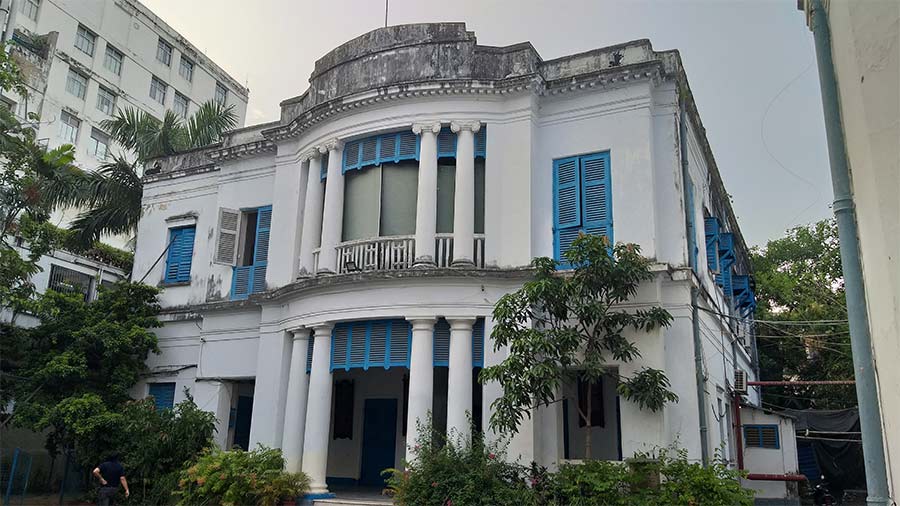
The front of the building
A short history of the Freemasons
The global fraternal organisation was primarily formed by builders and masons who would meet at various taverns to socialise. Soon a few informal yet closely connected groups were formed in Europe to help local authorities in town planning. As masonic history goes, in the next 200 years or so, these small groups expanded across Europe, winning the trust of the common people, who helped them with funds. In the 13th century, its popularity boomed and the masons found themselves in conflict with the Church and religious leaders.

The emblem of the Bengal Lodge
Considering its threat from power centres — both from the Church and other organisations — the Freemasons, for the sake of self-defence, gradually became a semi-secret organisation and moved base to France. Its membership was guarded by a code word and password, under regional leaders known as Grand Masters. Surprisingly, several famous names across history secretly joined these groups and many of them became Grand Masters. For the last few centuries, the global Grand Master of the organisation has been the presiding Duke of Kent.
Closer home…
In India, the organisation laid its formal foundation on December 27, 1728 – just 21 years after it was formalised in England (Calcutta, being the crown jewel of the East, was naturally the first choice). In 1752, the organisation cropped up in Madras and in 1758, it was established in Bombay as well.
In the initial days of colonial rule, the Freemasons were mainly confined to British army cantonments, serving various small needs of Europeans and Indians. Their activities were limited within the zones occupied by the East India Company. In Calcutta, their base was at the first Fort William (currently the GPO in Dalhousie Square).

The list of provincial Grand Masters
The first provincial Grand Master was one George Pomfret, and till mid 1950s, the position was mostly occupied by Europeans. From the 1960s, Indians started ascending to the role of Grand Masters. The first Hindu member of Bengal Freemasons was Prosonno Kumar Dutta. He became a member in 1872. Inside the present lodge, there is a memorial plaque dedicated to him.
Today, the Freemason Society is hardly a secret organisation, but it still prefers to keep a low profile and hardly uses its name at public functions.
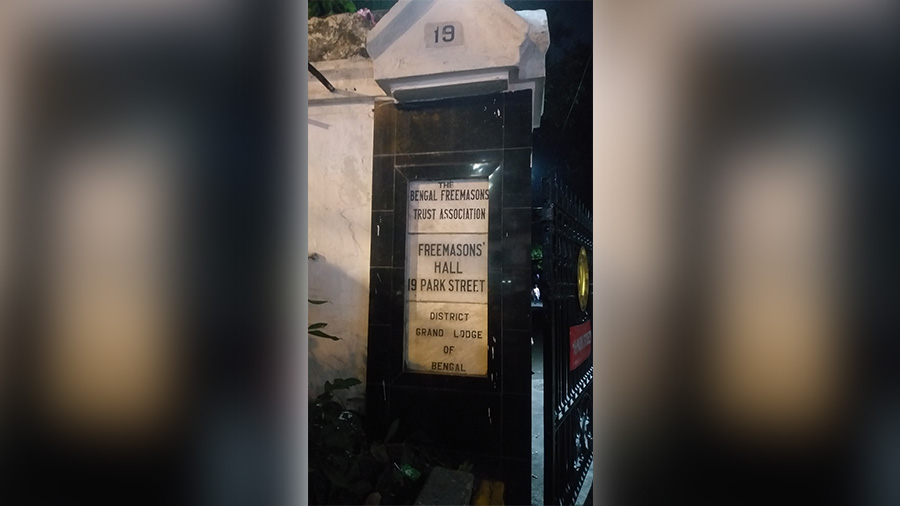
The entrance, at 19, Park Street
There are several historic buildings in Calcutta in which the foundation stone was laid by the Freemasons of Bengal with masonic solemnities. The Hindu College, St. Andrew’s Church, Metcalfe Hall, Medical college and Bethune College are just a few of them.
Ties that bind
The organisation has some unique customs that are universally applied. One of the most unwavering policies is that no member shall discuss politics or religion in any assembly meets. The history of this organisation has been enriched with some diverse influences and contributions. On February 2, 1907, when the emir of Afghanistan, Emir Habibullah Khan was invited by the British to Calcutta. He paid a visit to the society and signed up as a member. From the beginning, the Freemasons as an organisation, involved itself in various social work.
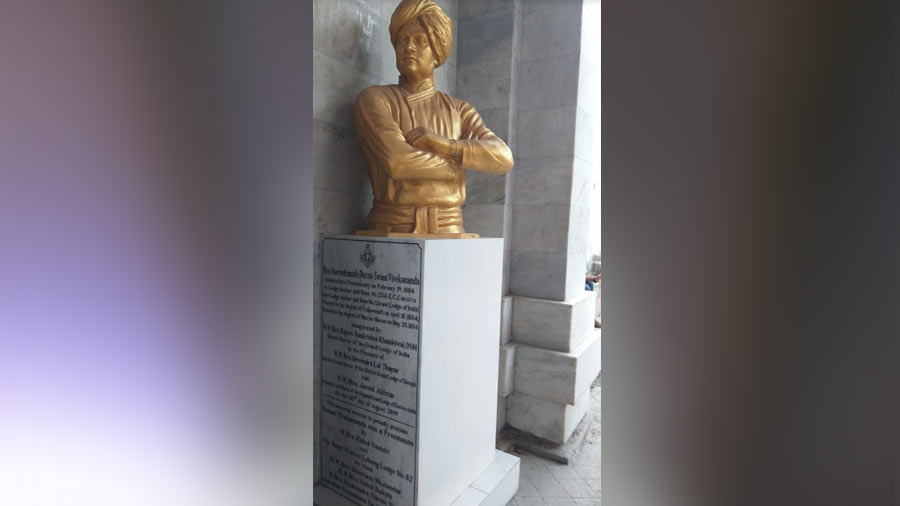
A bust of the Swami Vivekananda, one of the most noteworthy Freemasons
One of the most famous members of Freemasons was none other than Swami Vivekananda (then known as Narendranath Dutta), who became a Freemason on February 19, 1884. In fact, a bust of Swami Vivekananda adorns the entrance of the building.
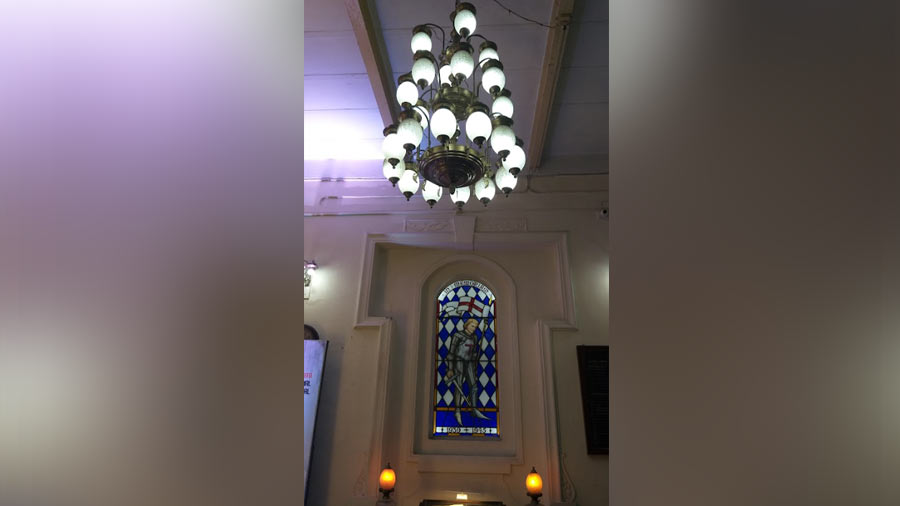
A glass pane, that is also a World War II memorial
The present building at the Park Street address is not open to the public and one needs special permission from the management to gain access. The building, built in 1928, has a stately wooden staircase and railing. Though many of the heritage objects have been lost or destroyed, it still has century-old painted glass works, chandeliers, an organ, voting box, wooden pelmets, door frames and metal lamp shades. Replete with various vintage and antique furniture, office equipment and priceless oil paintings, the building is a treasure trove of history.
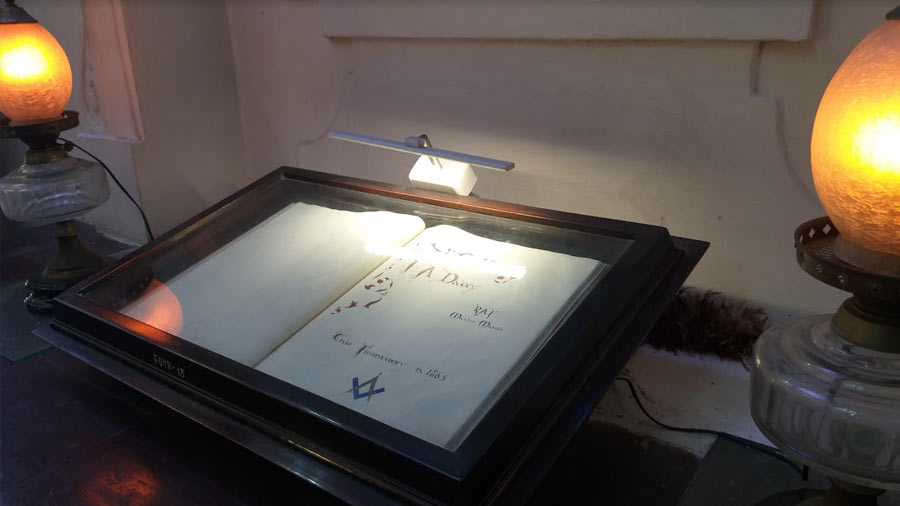
The prized Freemasons’ log book
The log book is a prized artefact – containing details of all Freemasons who laid down their lives in World War II. The log book is kept inside a glass box and can’t be viewed without permission from the management.
It also has a library with rare books and documents. It has two grand dining rooms and a bar, exclusive to members, and also has several temples where members meet over many purposes. In 1962, there developed a bifurcation within the Freemason Society and a new wing named Grand Lodge India was formed. They also function from the same building, in harmony with the parent organisation.
Somen Sengupta is passionate about heritage and travelling and has been writing about it for 26 years. When he is not executing duties as a senior executive in an MNC, he keeps an eye out for intriguing historical trivia and unearths forgotten stories. This also makes him an avid quizzer.
